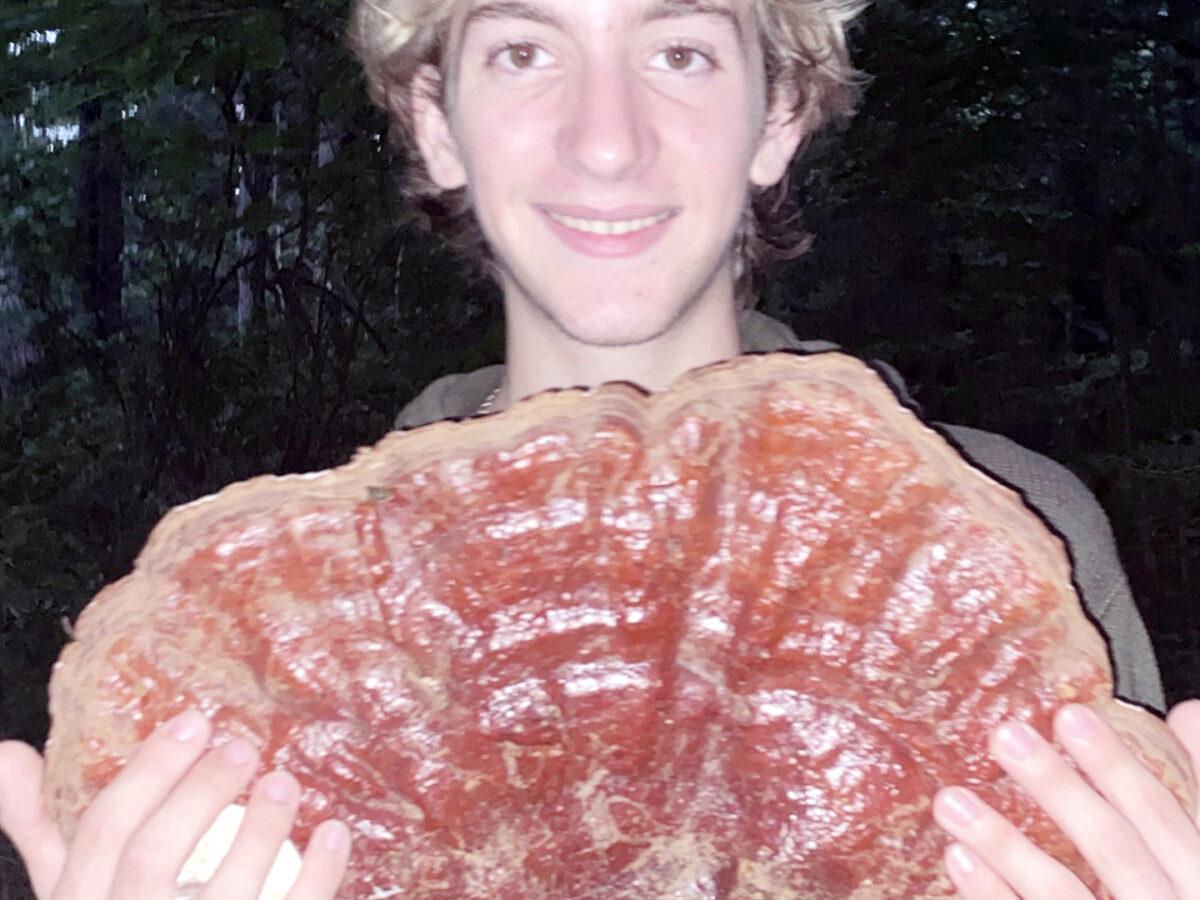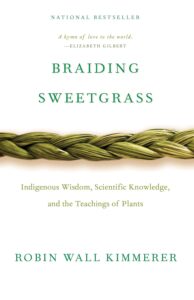Student Club Meeting

What Daniel Connelly ’25 learned from a member of the Wampanoag nation
Walking into the Office of Multicultural Affairs on the ground floor of Jeremiah Smith Hall, my senses were immediately delighted by the smell of sweetgrass and delicious Three Sisters Soup and cornbread provided by the dining hall. Images of Maciah Stasis tattooing a woman’s face and of gorgeous works of white and purple quahog shell jewelry were projected on a TV screen.
The Indigenous Reconciliation Club (IRC) and OMA had invited Stasis, a Herring Pond Wampanoag wampum worker, tattooist, regalia maker, story-teller and singer-dancer to campus to give two workshops and celebrate Indigenous Peoples Day. She was seated at the head of the Harkness table and engaged in deep discussion. As co-head of the IRC, it filled me with joy to see faculty and students packed around the table to learn from Stasis.
She began by telling us a bit about herself. We learned that she is a citizen of the Herring Pond Wampanoag tribe, and was born in the land of her ancestors, Plymouth, Massachusetts, where she graduated from Plymouth North High School. Since the age of 15, she has been educating others about her people, delivering keynote addresses at a number of museums and other Indigenous events throughout the U.S. and Canada. Interestingly, she had just returned from a traditional tattooing conference in Canada, where she learned from Inuit tattooists, whose tattooing customs have remained more intact than those of Northeastern Indigenous nations in the U.S.
She shared many details about her work as a wampum jeweler. The quahog clam used to make wampum is endemic to the waters around the Wamapanoag’s land and is believed to be a gift to the Wampanoag as it existed nowhere else. Wampum was greatly valued by Northeastern tribes, and the Wampanoag traded it with surrounding tribes such as the Haudenosaunee, who used it to create treaty belts, among other items. In addition to a form of currency, wampum was and is made into jewelry. Stasis said the work is laborious but worth it. Her pieces include rings, necklaces, bracelets and carvings of wildlife. But, she warned, the dust shed by quahog shells is toxic and has been known to kill ill-prepared artisans.
Stasis then spoke on quillwork, a rare and complicated form of art that uses the quills of porcupines. Quillwork predates beadwork and is used to ornament regalia in much the same way. It is painstaking: Make one mistake and you have to start over, even after multiple hours, or days, of work.
Last, she spoke about her story and process as an Indigenous poke tattooist. She said that tattooing is practiced around the world, and the most common and ancient form is stick-and-poke. This refers to using a sharp needle, or thorn, to insert pigment such as soot into the skin. The method was used across the continent, including in the Wampanoag Nation. Although the custom varied from nation to nation, tattoos generally marked events like childbirth, ages, deaths and accomplishments. But this practice has been suppressed and vilified throughout the history of our country; as a result, few Indigenous cultures continue to practice traditional tattooing.

I learned that Stasis, who has tattooed herself and others for a variety of reasons, is truly a trailblazer in revitalizing this important cultural custom. She says the process is extremely intimate and exhausting, and emphasizes the importance of the environment, the energy and the tattooist during the procedure.
By the end, all of us around the table were brimming with questions, which Stasis answered. She gave each of the attendees a small satchel that contained part of a quahog shell, cedar, deer sinew and sweetgrass, each of which provides protections and properties, she said. I left with a wealth of knowledge and a deep sense of gratitude. This was a truly transformative and mind-expanding event unlike any other I’ve attended in my time at Exeter, and I am extremely grateful for the knowledge Stasis shared, and the space she created in OMA that day.
— Daniel Connelly ’25 is a proctor in the Office of Multicultural Affairs and co-head of the Academy’s Indigenous Reconciliation Club.
This article was first published in the spring 2025 issue of The Exeter Bulletin.